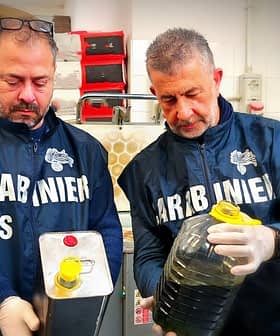PGI Olio Lucano for Olive Oil From Basilicata Underway
The European Commission is expected to approve the protected geographical indication (PGI) “Olio Lucano” in the coming months, corresponding to the region of Basilicata in Southern Italy, known for its UNESCO World Heritage Site of the Sassi di Matera. The PGI will promote the quality and territory of the extra virgin olive oil produced in the region, using autochthonous varieties and a maximum of 20 percent of other varieties.
After an application made by the Italian Agriculture Minister, the protected geographical indication (PGI) “Olio Lucano” should be approved by the European Commission in the coming months.
Its production area corresponds with the administrative territory of the Basilicata, also known as Lucania, a region in Southern Italy which has been designated a European Capital of Culture, renowned for the UNESCO World Heritage Site of the Sassi di Matera.
“According to the ancient olive tradition of our land, the groves embraced the villages set high in the hills,” the director of the sensory analysis laboratory of the Basilicata Region in Metaponto, Giovanni Lacertosa explained. “While some old mills are currently been converted to museums and cultural venues, technological advances and research in the sector allowed the operators to reach the highest standards,” he said. “The upcoming PGI will promote the quality and the territory of our extra virgin olive oil.”
Autochthonous varieties, including Ogliarola del Vulture, Ogliarola del Bradano, Maiatica, Cima di Melfi, Sammartinenga, and Faresana, just to name a few, and a maximum of 20 percent of other varieties must be used to produce the PGI Olio Lucano, whose logo depicts a stylized amphora with four oblique curved lines which represent the main rivers of the region and recall the twisted trunk of the secular olive trees widespread in Lucania.









